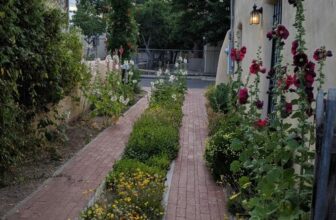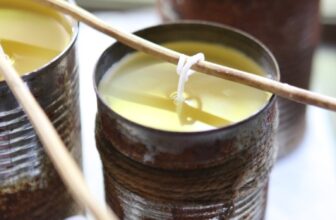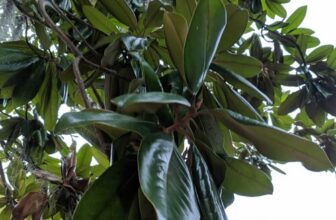Nigella is a classic beauty, bringing beautiful colour and whimsy to gardens and bouquets. Ready to fall head over heels for love-in-a-mist? Here are some top tips for growing the nigella plant as a cut flower or dried seed pod.
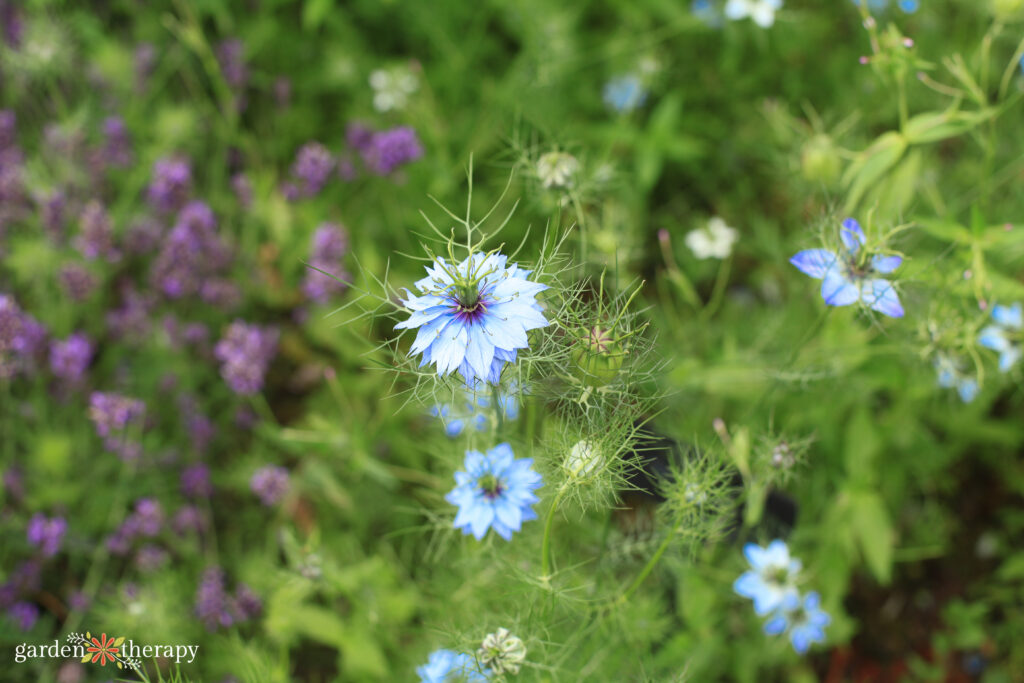
While flowers never truly go out of style, certain blooms can become trendy. I’ve noticed many ‘old-fashioned’ flowers become new favourites for florists and flower gardeners alike, including sweet peas, hydrangeas, and my personal favourite, lilacs.
I predict that love-in-a-mist (nigella) will have a similar rise! This old-fashioned cottage flower has looks airy, is super easy to grow, and is versatile both in the garden and in the vase.
I first became familiar with the nigella plant a few years ago, as I was looking for interesting seed heads to collect. What I didn’t expect was how much I would also love the flower. I was soon torn between cutting the flowers for bouquets or waiting for the nigella pods to use instead.
Let me get you hooked on growing your own nigella flowers. Here are my top tips!
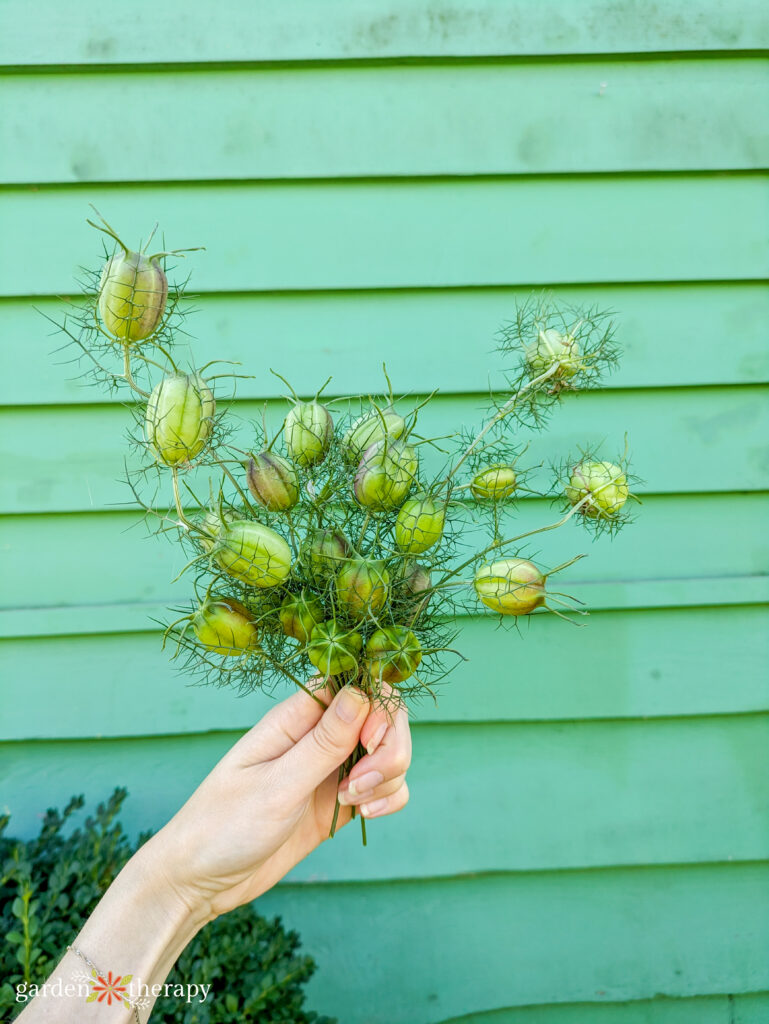
Meet the Nigella Plant
Known commonly as love-in-a-mist, Nigella damascena is native to southern Europe, North Africa, and Southwest Asia. It’s recognized for its ferny foliage and lacy bracts that surround the flower, giving it a very whimsical appearance. It belongs perfectly in a fairy garden.
Nigella flowers are star-shaped and can come in single or double blooms. They’re most known for being blue, but also come in shades of purple, pink, and white.
Bees love the flower, but they’re considered deer-resistant. The flowers bloom in spring and early summer for a few weeks before they turn into seed pods, which can also be harvested and dried to use as a textural ingredient in fresh or dried bouquets.
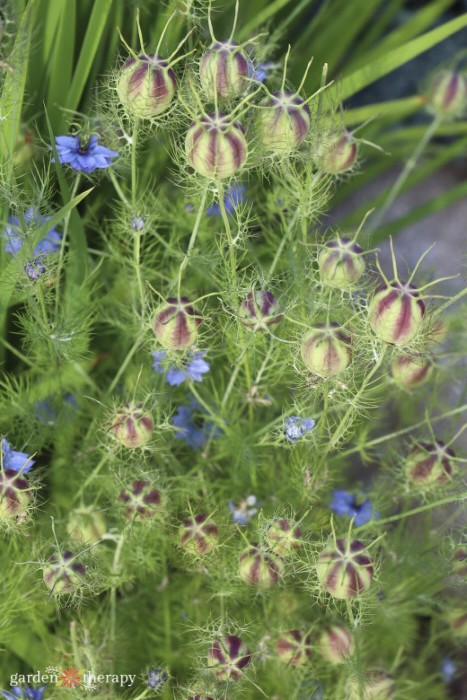
When to Start Nigella Damascena Seeds
Nigella plants are hardy in zones 2-11 and are considered a cool-season annual. This means they like a cold start to life and are best grown in the spring.
For those with mild winters, you can sow directly in the fall. This will give you the tallest stems and earliest growth, though you may need row cover as cold protection. If starting in the fall, plant seeds 6-8 weeks before the first fall frost.
Personally, I haven’t had much luck sowing in the fall and prefer to start seeds in the spring. Direct sowing is easiest, as nigella plants are known to dislike transplanting. You can sow seeds directly outside 1-2 weeks before the last frost (they are frost-tolerant).
I’ve started my seeds indoors without any trouble. If starting indoors, you can put the seeds in the freezer for ten days to speed up germination. Start the seeds inside 6-8 weeks before the last frost, and move them outside after the last frost.
Succession plant the nigella seeds every few weeks until June to get the longest growing season.
Planting Nigella
Nigella seeds require darkness to sprout, so you’ll want to cover the seeds lightly with soil. It takes 10-14 days for the sprouts to germinate.
Space or thin your nigella to be six inches apart. They grow best in full sun, but will also grow in partial sun. AKA, the more sun, the more blooms.
Nigella plants grow to be 18-24 inches tall. It takes 65-70 days for it to flower, and 80-85 days for it to produce seed pods.
Nigella flowers can also grow in containers. If growing in a container, ensure it has room to accommodate the mature plant and drainage holes. A one-gallon container for one nigella plant is a good rule of thumb.
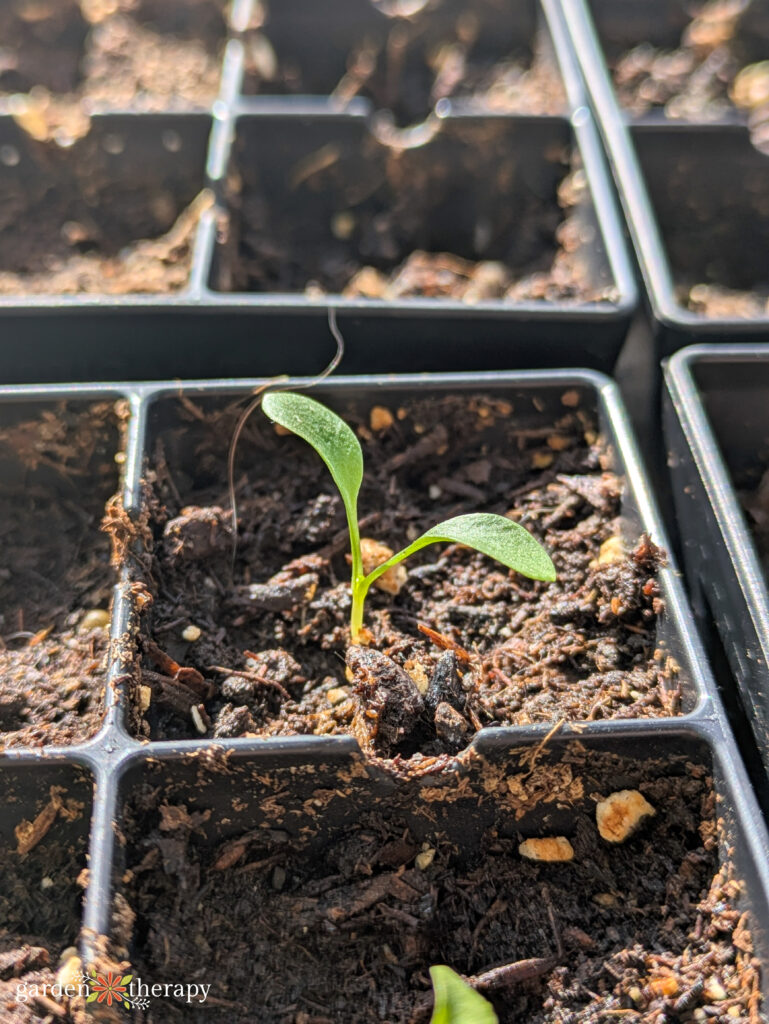
Caring for Nigella Flowers
Nigella flowers will naturally branch out, so there’s no need to pinch young plants. As a spring flower, it will bloom well in conditions under 24°C (75°F). Once temperatures get hot and regularly above 27°C (80°F), the plant will begin to die back.
Nigella plants have average moisture needs. They prefer consistent moisture, but can tolerate some drought. They do best in well-draining soil.
To encourage more blooming, you can fertilize once a month. The plant may self-sow depending on the conditions, and if you leave some seed heads on the plant.
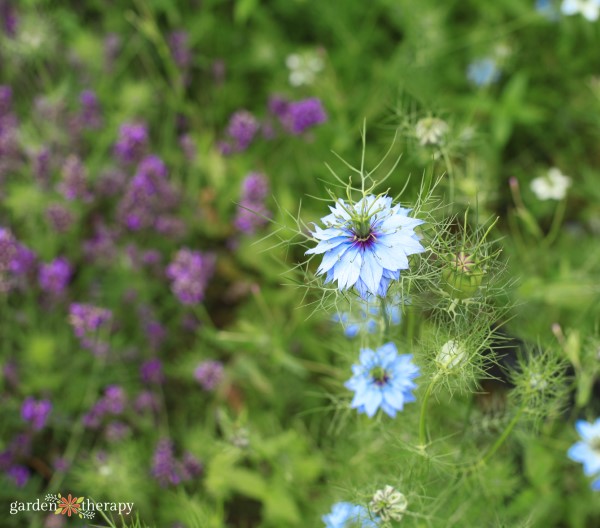
Harvesting Nigella Flowers
Nigella flowers work wonderfully in arrangements as a filler, thanks to their lacy foliage. They give a very airy feel to an arrangement, as well as texture.
If you’re harvesting flowers, cut the flower when it is three-quarters of the way open. The flowers will continue to open after cutting. Harvest the central stem first, almost to ground level, leaving the side shoots to continue growing. Flowers should last 7-10 days in a vase.
Leave the flowers on the plant if you want to harvest the seed pods. The dried nigella pods are so pretty and unique, and dry beautifully. Harvest the seed pods early to prevent blemishes and so they don’t dump seeds. Ideally, the stripe should still be visible.
Hang the nigella pods upside down for 2-3 weeks in a cool, dry place. Then they should last you for years to come.
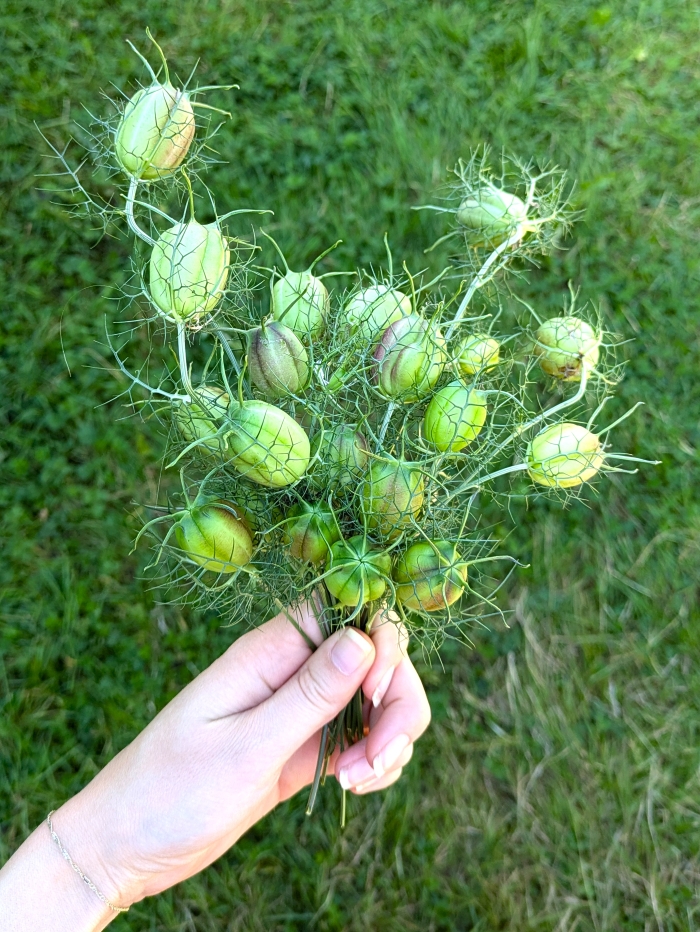
Notable Nigella Plant Varieties
Some varieties sold in nurseries are used as bedding plants, while others are better suited for cut flowers thanks to their height. Here are a few to use for cut flower arrangements.
- ‘Miss Jekyll’ is one of the most popular varieties to grow, with beautiful double blooms. ‘Miss Jekyll Dark Blue’ gives a beautiful royal blue hue while ‘Miss Jekyll Rose’ has rose-white flowers that turn a beautiful plum as they age.
- ‘Albion’ has pure white flowers, which make them great for just about any flower arrangement. They produce a unique, deep mahogany seed pod when dried.
- ‘Delft Blue’ is one of the most popular cut flower varieties right now. It has white flowers with dark blue and purple streaks.
- ‘Persian Jewels’ starts off a pale baby blue before transforming into hues of purple, blue, white, and in between.
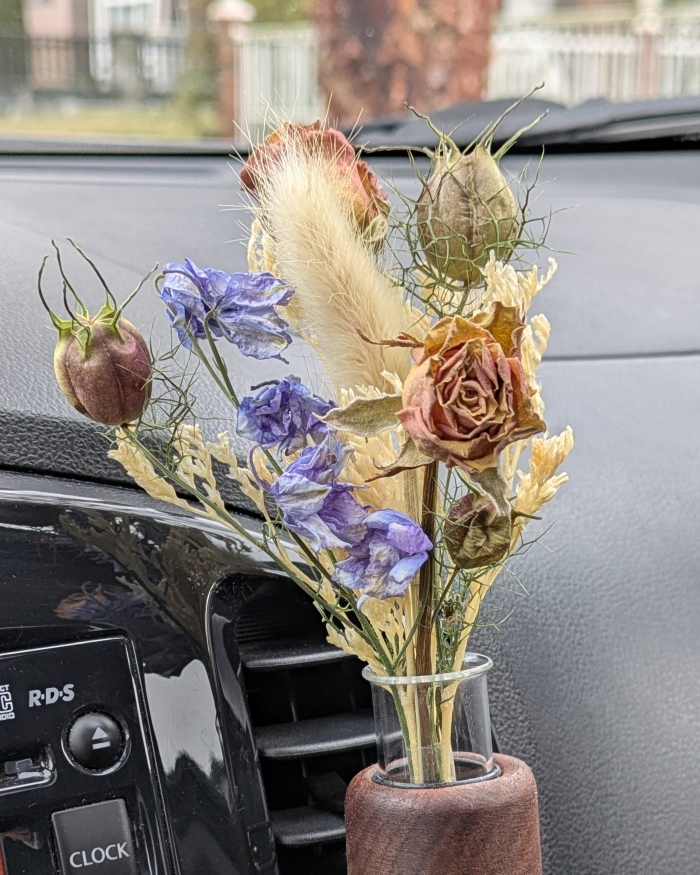
FAQ About Nigella Damascena
The plant itself is not really considered edible and is only considered slightly poisonous. It is more often used as an ornamental.
The seeds can be used for cooking, with a somewhat nutmeg-like and slightly spicy flavour. However, Nigella sativa (also known as black cumin or fennel flower) is more commonly used in its place, since it has a better flavour.
The name love-in-a-mist comes from the flower being nestled in lacy foliage, giving an airy-mist-like appearance. The Latin name, Nigella Damascena, comes from the Latin word for black “niger” due to the colour of the seeds, and Damascus, Syria where the plant can be found.
In a bouquet, it can symbolize the openness to love, heart strength, or unrequited love.
Nigellas are considered annuals. They often won’t make it through a whole gardening season, no matter your zone, as they prefer cool conditions and will die back in heat. However, they can be re-seeders, meaning that they may sow seeds that will bloom the following year.
More Cut Flowers to Grow
From Vancouver, BC, Holly is Garden Therapy’s Content Manager. She has a BFA in Writing from the University of Victoria as well as a diploma in Floristry Design from Burnaby CCE. At home, she loves to grow cut flowers and dried flowers for her business, Dirty Daisy Florals, and is an avid houseplant collector and lover of bees. You can find her at @dirtydaisyflorals and @hollyheuversocial.

